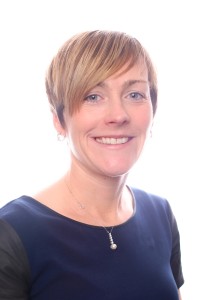Insurers continue to cry ‘soft market’, so what are the benefits for captive owners and how best can they take advantage?
One of the primary benefits, front and centre, of establishing a captive is to avoid commercial market fluctuations.
A bad claims history aside, prospective and established captive owners now find themselves faced with a buyer’s market that is increasingly ‘softening’, meaning purchasing cover is in theory easier and more affordable.
Speaking to Captive Review in Vermont in August, Zurich’s SVP head of captive services Steve Bauman said the state of the market should be taken advantage of by risk and insurance managers, both captive and non-captive owners, to assess in greater detail the risk financing options in front of them.
It is clear the sophisticated risk managers and insurance buyers will be doing this, but for some purchasing coverage it remains simply a price-driven procurement process.
“If the captive is already set up, a soft market can influence the strategy mainly around the level of retained risk within the captive,” says Seamus Gallagher, director of consulting at Willis Global Captives Practice.
“I am doing a captive review for a client and their long-term strategy is to retain a much higher level of risk within the captive, but they have postponed that year after year because of the soft market. And annually in their renewal discussions they will assess what premium savings they will get for higher retentions, but these savings haven’t really been compelling so they have kept those retentions at a fairly low level.”
Gallagher is keen to emphasise, however, that when advising clients, it is made clear that market pricing should not be the sole reason when discussing how to utilise or expand the captive.
Captive expansion
While there are examples of firms that will remain conservative and take advantage of an affordable market when presented with one, there is also a general consensus that it can be a good time to focus on other areas of the captive – exploring new lines, evaluating reinsurance arrangements and assessing investment opportunities.
Chris McGloin, immediate past chairman of Airmic and vice president of risk management and insurance at Invensys for eight years until the takeover by Schneider Electric led to his departure in June, is quick to challenge what the carriers and brokers actually mean by ‘soft insurance market’.
While agreeing captive owners can use the market’s state to their advantage, he believes the insurers have a role to play in offering more attractive and innovative products.
“When I look at the returns from the insurers, I don’t see many of them losing money at the moment,” he tells Captive Review. “It seems to me to be a market where insurers are making money and therefore it does seem a great opportunity for them to enhance and evolve their products so that they can sell better products to their customers.”
This, especially with regards to carriers’ major accounts, McGloin believes should work hand-in-hand with developing the captive, since the owner should normally want to have a rounded, joined-up view of all exposures rather than prescribe to the often “compartmentalised” approach by insurers.
“If the captive is already set up, a soft market can influence the strategy mainly around the level of retained risk within the captive.”
“It ought to mean the carriers are looking longer term and more closely with their big ticket customers at where they can use captives in a more conventional way to incubate new risks,” he adds.
“So it should be a great opportunity for customers to use their captive vehicles with the support of the insurance market to help grow and develop some of these new-fangled products.”
One potential drawback of a soft insurance market for captive owners can be a squeeze on underwriting profit if the premium rates that are paid into the captive come under pressure from the external market.
That view could reasonably be described as captive owners having their cake and eating it and as Colleen McHugh explains (see box-out), there can be solutions found within the company’s investment strategy.
Considering the ultimate client is the insured, a ‘soft’ or more affordable market can only really be viewed as a positive.
Clive Hassett, director of multinational services at ACE, elaborated further on the reinsurance benefits for captives when speaking to Captive Review at the launch of the insurer’s Changing Multinational Risks and Evolving Solutions report.
“The soft rates are obviously finding their way through to the reinsurance market,” Hassett says. “You have almost got this arbitrage situation whereby rates at the front end of the insurance market may be falling and so the comparison between transferring risk and keeping it in the captive may be more favourable to transferring it.
“But you have then got a soft reinsurance market which is more affordable.”
Having a softer reinsurance market can further enhance the potential of using the captive as an incubator since layers of an emerging risk being insured through the subsidiary for the first time can be transferred to the global market.
Hassett and Gallagher both add that with the insurance market as it is, risk managers should look to take advantage where suitable.
Hassett describes carriers as “desperate for new business” which can lead to more underwriting options around emerging risks and additional covers for existing risks.
“We find generally, though, that most clients still want to have a broader, longer term view of the pricing including all of the other benefits that a captive can bring,” Gallagher adds. “Having said that, if you turn the question around and say if the market suddenly became hard tomorrow, would we have noticeably more enquiries? The answer is yes.”
Colleen McHugh on the investment angle

Colleen McHugh is corporate investment adviser, vice president, wealth & investment management at Barclays.
Captive insurers have two sources of income: underwriting profits and investment income. For a number of years now, captive insurers have been adversely impacted on two fronts.
On one side, the protracted soft insurance market is negatively impacting underwriting revenue while simultaneously assets are suffering in an unprecedented period of low interest rates.
Whilst both these headwinds are problematic, dwindling returns on assets can be examined, and indeed a more optimal solution is available to drive returns on assets for the benefit of the captive.
Throw into the mix the fact that the costs of running a captive are creeping higher and some captive parents are in need of being reminded of the vast array of benefits of self-insuring (outside solely a lower premium), the pressure is piling to drive returns on assets and avoid the captive being squeezed.
Investing for captive insurers, of course, is different from other institutional and private client investors. Remember the primary purpose of a captive is to act as an insurance vehicle to meet the claims responsibilities of their parent.
The risk is taken on the liability side via the underwriting process; therefore, the assets must be invested in safe liquid investments to ensure they are available to meet any future claims. Therein lies the conundrum facing captive insurers; how to balance the need to drive asset returns but ensure cash is available for claims.
How does a captive achieve this? First, they must invest time and develop an investment strategy. This strategy will involve an actuarial claims analysis, which will lead to a segmentation of cash reserves into operating, core and strategic funds.
Each separate classification can then be managed to a different strategy. Cash, however, is not the answer for the current headwinds facing captive insurers. Over long periods, cash is a poor asset, and especially in today’s era of financial repression.
The Barclays Equity Gilt study 2014 reveals that since 1899, cash in real terms has returned about 0.8% per annum, compared to 1.2% per annum from gilts and 5.1% from equities.
In the decade to 2013, shares have returned 5% a year and gilts 2%, while cash has lost 0.5% a year. Albeit that we must recognise the risks of non-cash investment. At some point such conservatism needs to abate, and captives will diversify some assets away from cash. Perhaps a continuation of a soft insurance market will spur such action, or perhaps not.






